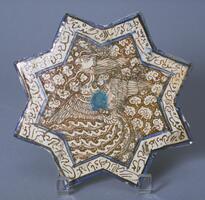163 UMMA Objects
163 UMMA Objects
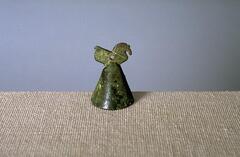
Iranian (Iranian)
Bell
Gift of the Estate of Maxine W. Kunstadter in memory of Sigmund Kunstadter, Class of 1922
1983/1.425
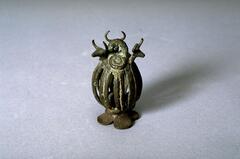
Iranian (Iranian)
Rattle
Gift of the Estate of Maxine W. Kunstadter in memory of Sigmund Kunstadter, Class of 1922
1983/1.428

Iranian (Iranian)
Beaker
Gift of the Estate of Maxine W. Kunstadter in memory of Sigmund Kunstadter, Class of 1922
1983/1.429
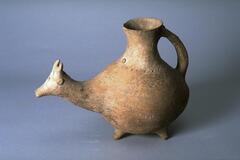
Iranian (Iranian)
Vessel with spout in the shape of an antelope head
Gift of the Estate of Maxine W. Kunstadter in memory of Sigmund Kunstadter, Class of 1922
1983/1.430
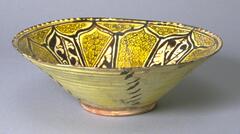
Iranian (Iranian)
Shallow bowl with stylized floral medallion
1000 – 1199
Museum purchase made possible by the Margaret Watson Parker Art Collection Fund
1961/1.183

Iranian (Iranian)
Deep bowl with vegetal and calligraphic designs
10th century
Museum purchase made possible by the Margaret Watson Parker Art Collection Fund
1961/1.185

Iranian (Iranian)
Star-shaped tile with molded floral design
1400 – 1599
Transfer from the College of Architecture and Design
1972/2.135

Iranian (Iranian)
Tile fragment with inscription
1100 – 1299
Transfer from the College of Architecture and Design
1972/2.152
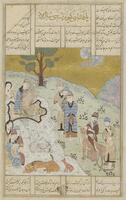
Iranian (Iranian)
Gaiumart the First Shah, from the Shahnama of Firdausi
1455 – 1465
Museum Purchase
1963/1.40
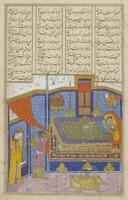
Iranian (Iranian)
Tahmina Comes to Rustam, from the Shahnama of Firdausi
1455 – 1465
Museum Purchase
1963/1.46
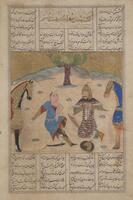
Iranian (Iranian)
Rustam Slays Suhrab, from the Shahnama of Firdausi
1455 – 1465
Museum Purchase
1963/1.47
Loading…
